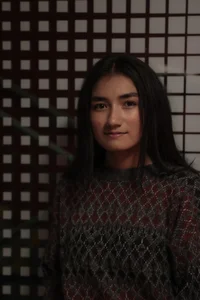
The UBC Wall Opera Project is exploring how opera changes the brain.
At any given moment on stage, an opera singer may be making a dozen different split-second decisions. They’re singing, acting, navigating the set, working with an orchestra and engaging an audience — all while wearing costumes that can weigh up to 45 pounds.
The Wall Opera Project is exploring how rigorous opera training sculpts the brain. Through physiological and psychological evaluations, researchers hope to demonstrate the effects of opera training on memory and executive function.
At the beginning of the academic year, study participants — including opera singers, actors and athletes — undergo a MRI scan and full assessment of working memory and educational abilities. After going through a year of training, researchers then reimage and reassess neuropsychological function.
This interdisciplinary initiative requires efforts from a diverse team of researchers, including Nancy Hermiston, voice and opera divisions director at UBC School of Music, Dr. Lara Boyd of the Brain Behaviour Laboratory, Dr. Janet Werker, a psychology professor, as well as post-doctoral fellows Anja-Xiaoxing Cui and Negin Motamed Yeganeh.
Werker focuses on the language acquisition element of opera. Singers are required to understand what they are singing about, as well as what others onstage are saying, to act out a story. Performing in French, German and Italian (and occasionally Russian, Czech and Spanish) promotes an intimate knowledge of each language, although rarely complete fluency.
Before being picked up by the Peter Wall Institute for Advanced Studies, Hermiston has tried to kickstart research on the intersection between opera and neuroscience for nearly 16 years.
Boyd pointed out that a psychologist, a neuroscientist and a music professor is a very unusual combination of principal investigators for a study. She said it’s very fortunate that they were able to find support for this type of work, and that it will be difficult to do again.
Artists often suffer because “research agencies that give out money want to see graphs, they want to see charts, they want to see results,” according to Hermiston. “And what can we say? We can say our audience was absolutely silent at the end of a performance because they were so moved … But how do you measure that?” Hermiston said.
“At its very basic level,” said Boyd, “[the study] just gives us a much better appreciation for the importance of the arts, in society and in our student body.” On both a personal and institutional level, research supporting the value of music may inform funding decisions in the education system.
After three and a half years of work — COVID-19 restrictions halted live performances, which caused slight delays in the project – the team looks forward to sifting through one of their first big batches of data in May.
“[Even promising results] certainly won’t show everything,” said Hermiston, “but if it shows that there’s more research to be done, that’s a win there anyway. We want to keep music going.”
This article is part of The Ubyssey's neuroscience supplement, Big Brain Time. Pick up our latest print issue on campus to read the full supplement.


